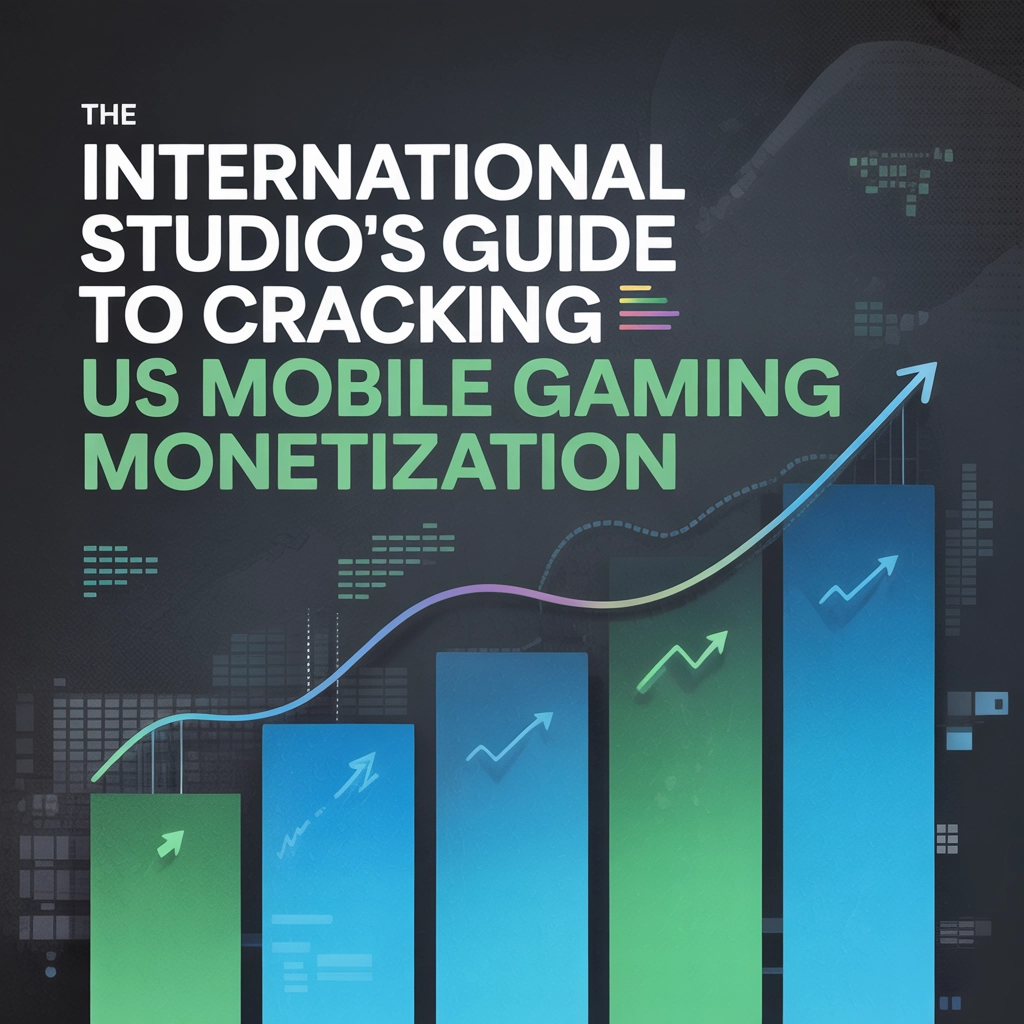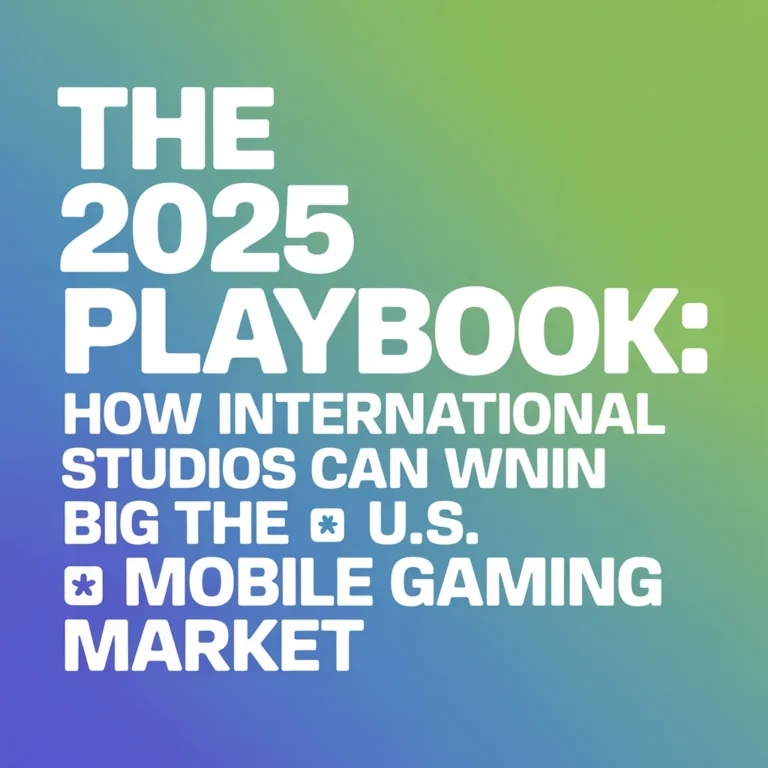The International Studio's Guide to Cracking US Mobile Gaming Monetization

Breaking into the US mobile gaming market can feel like trying to crack a safe blindfolded. The numbers are tempting – American players spend more per capita than almost anywhere else in the world – but the competition is fierce, and the monetization landscape is constantly evolving.
If you're an international studio eyeing the US market, you're probably wondering what makes American players tick and how to turn those downloads into dollars. The good news? US players are willing to spend money on mobile games. The challenge? They expect premium experiences and have zero tolerance for poorly implemented monetization.
Why the US Market is Different
American mobile gamers are sophisticated consumers who've grown up with freemium models. They understand the value exchange – free gameplay in return for the option to purchase enhancements, cosmetics, or convenience features. This creates a unique opportunity for international studios, but only if you approach monetization strategically.
US players typically fall into distinct spending patterns. You've got your whales (less than 5% of players generating 50%+ of revenue), your dolphins (moderate spenders who make occasional purchases), and your minnows (the majority who prefer free gameplay but will engage with ads). Understanding these segments is crucial for building effective monetization strategies.

The Foundation: Hybrid Monetization Models
Gone are the days when you could rely on a single monetization stream. Today's successful international studios in the US market use hybrid models that combine multiple revenue sources. This approach doesn't just maximize earnings – it creates multiple touchpoints with different player types.
The most effective hybrid models blend in-app purchases with in-app advertising. This combination works because it monetizes both paying and non-paying users without alienating either group. Your spenders can bypass ads through purchases, while your free players contribute through ad engagement.
In-App Purchases + Rewarded Ads is the sweet spot for most games. Players can earn premium currency or items by watching video ads, which creates a pathway for free players to experience premium content. This often converts them into paying customers once they see the value.
Subscriptions + In-App Purchases targets your most engaged players. Think of subscriptions as your VIP tier – offering ongoing benefits like exclusive content, increased rewards, or cosmetic options. Meanwhile, in-app purchases handle immediate gratification and seasonal content.
Mastering In-App Purchases in America
US players are accustomed to spending money on digital goods, but they're picky about what they buy. Cosmetic items perform exceptionally well – Americans love personalization and self-expression in their digital experiences. Battle passes and seasonal content also resonate strongly because they provide ongoing value and exclusivity.
The key is pricing psychology. US consumers respond well to value bundles and limited-time offers. A $4.99 starter pack often outperforms individual $0.99 items because it feels like better value, even if the math doesn't always add up.
Timing matters enormously. The most successful international studios launch purchases around US holidays, paydays (1st and 15th of the month), and weekend gaming sessions. Understanding American spending cycles can dramatically impact your conversion rates.

Advertising That Actually Works
In-app advertising in the US market requires finesse. American players will tolerate ads – they might even enjoy them – but only if implemented thoughtfully. Rewarded video ads consistently perform best because players choose to engage in exchange for clear benefits.
Playable ads are gaining massive traction in the US market. These mini-demos let players experience other games directly within your app, creating higher engagement rates and better advertiser relationships. They feel less intrusive than traditional display ads and often generate higher eCPMs.
Native advertising blends seamlessly with your game's UI and feels less disruptive. When done right, native ads can actually enhance the gaming experience by introducing players to relevant products or services at natural breaking points.
Subscription Models That Stick
American consumers are subscription-savvy, thanks to Netflix, Spotify, and countless other services. This familiarity makes them more receptive to gaming subscriptions, but also more demanding about value delivery.
Successful gaming subscriptions in the US market offer clear, ongoing benefits: exclusive cosmetics, increased rewards, special events, or early access to content. The key is making subscribers feel special without making free players feel punished.
Price points matter. $4.99-9.99 monthly subscriptions perform well because they align with other entertainment subscriptions Americans already pay for. Higher price points work for premium games with deep content libraries.

Understanding US Player Psychology
American gaming culture emphasizes competition, achievement, and personalization. These cultural values should inform your monetization approach. Competitive elements like leaderboards, tournaments, and ranking systems drive engagement and spending.
Achievement systems tap into American goal-oriented culture. Players will pay for items that help them complete challenges, unlock achievements, or progress faster through content. This is why convenience purchases (extra lives, speed boosts, instant completions) perform so well.
Personalization and self-expression drive cosmetic purchases. Americans spend billions on fashion, and digital fashion follows similar patterns. Exclusive skins, unique animations, and customization options consistently generate revenue.
Data-Driven Optimization
Successful monetization requires constant testing and optimization. A/B test everything – prices, offers, timing, placement, and messaging. US players' preferences vary significantly by demographic, geographic location, and gaming habits.
Track cohort performance religiously. Understanding how different player segments behave over time helps you optimize for long-term value rather than quick wins. Focus on Day 7, Day 30, and Day 90 retention alongside monetization metrics.
Use seasonal data to inform your strategies. American spending patterns fluctuate dramatically around holidays, back-to-school seasons, and major cultural events. Plan your content releases and promotional campaigns around these cycles.
Common Pitfalls to Avoid
The biggest mistake international studios make is implementing monetization too aggressively. US players will abandon games that feel predatory or pay-to-win. Balance is everything – you want to encourage spending without forcing it.
Don't underestimate localization beyond language. American cultural references, pricing expectations, and spending behaviors differ significantly from other markets. What works in Asia or Europe might flop in the US.
Avoid oversegmentation in your early stages. While it's tempting to create different experiences for different player types, focus on building one excellent experience first. You can always add complexity later once you understand your US audience.
Building Long-Term Success
Sustainable monetization in the US market requires thinking beyond immediate revenue. Focus on building trust with your players through fair, value-driven monetization that enhances rather than gates the core experience.
Regular content updates keep players engaged and create new monetization opportunities. American players expect ongoing support and fresh content – games that feel abandoned lose players quickly.
Community building drives retention and increases lifetime value. US players often make purchasing decisions based on social factors – what their friends are buying, what streamers are using, what's trending in gaming communities.
Your Path Forward
Breaking into US mobile gaming monetization isn't about finding one perfect strategy – it's about building sustainable systems that grow with your player base. Start with hybrid models, focus on user experience, and optimize based on real data rather than assumptions.
The US market rewards studios that respect their players while providing clear value. Get this balance right, and you'll find American gamers are some of the most loyal and valuable players in the world.
Ready to dive deeper into mobile gaming strategies? Check out our comprehensive resources at Systara Games for more insights into successful market entry and monetization optimization.






